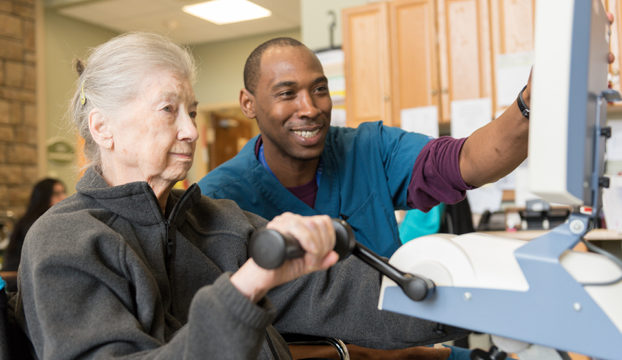Effective Approaches for Reducing Dyspnea in Physiotherapeutic Rehabilitation Sessions
Effective Approaches for Reducing Dyspnea in Physiotherapeutic Rehabilitation Sessions
Blog Article
Breathing difficulties, or difficulty respiration, is a frequent concern that many individuals face, particularly those with chronic lung conditions, heart problems, or other medical conditions. In rehabilitation therapy appointments, addressing breathing difficulties is crucial for helping clients enhance their overall standard of life. By utilizing specific techniques and strategies, physical therapists can assist patients in managing their breathing difficulties. Grasping these efficient methods can enable both therapists and patients to collaborate together more efficiently in addressing challenges related to breathing difficulties.
One of the main methods used to reduce breathing difficulties in physical therapy is the application of controlled breathing activities. These activities often concentrate on abdominal breathing, which promotes patients to use their breathing muscle rather than their upper thoracic muscles when inhaling. This method helps to maximize lung capacity and efficiency. Additionally, pursed-lip breathing is another technique that can be helpful. This method requires breathing in through the nose and breathing out slowly through pursed lips, which can help to keep airways open longer and make breathing feel more manageable. By incorporating these exercises into therapy sessions, physical therapists can provide patients with strategies to control their breathing difficulties both during and outside of their sessions.
Another crucial aspect of controlling dyspnea in physical therapy is the creation of an personalized exercise program. Tailoring exercises to satisfy the individual needs and abilities of each patient is essential. Therapists should slowly introduce aerobic activities, such as ambulating or biking, in a structured manner, allowing patients to build their endurance over time. This incremental approach helps patients to feel more comfortable with fitness activity while at the same time improving their lung capability and overall stamina. It is vital for therapists to observe patients closely during these exercises to make sure they are not overexerting themselves, which could lead to increased shortness of breath.
Teaching also plays a significant role in alleviating breathing difficulties during physical therapy appointments. Providing patients with information about their ailment and the mechanisms behind dyspnea can enable them to take control of their health. Therapists can explain how elements like anxiety, posture, and environmental conditions can influence breathing. By understanding these concepts, patients can discover to control their symptoms more efficiently. Techniques such as stress reduction methods and proper body posture can further assist in minimizing the effects of breathing difficulties during daily activities and therapy appointments.
In conclusion, successfully alleviating breathing difficulties in physical therapy appointments involves a combination of breathing exercises, individualized exercise regimens, and patient you can look here teaching. By implementing these effective approaches, physical therapists can assist patients control their breathing difficulties and improve their overall health. Working together between therapists and patients is essential to create customized interventions that address individual needs. With the appropriate support and methods, patients can experience comfort from dyspnea and engage more fully in their physical therapy journey, ultimately leading to a better quality of life.